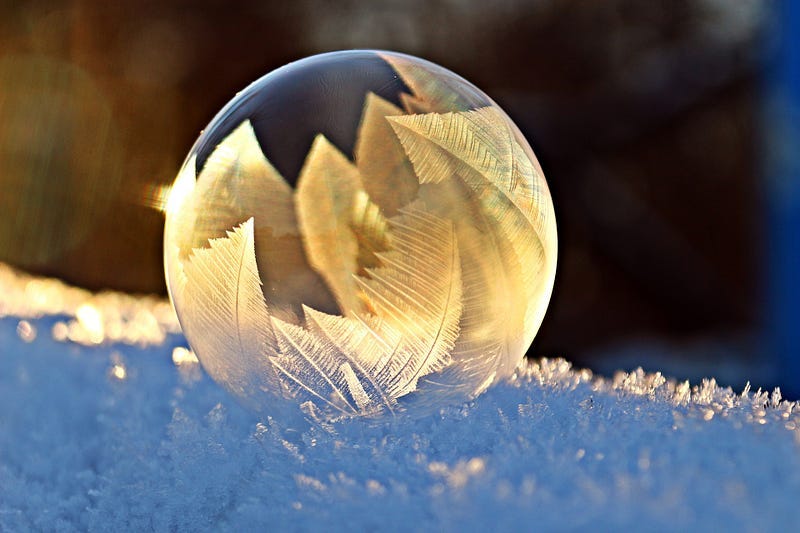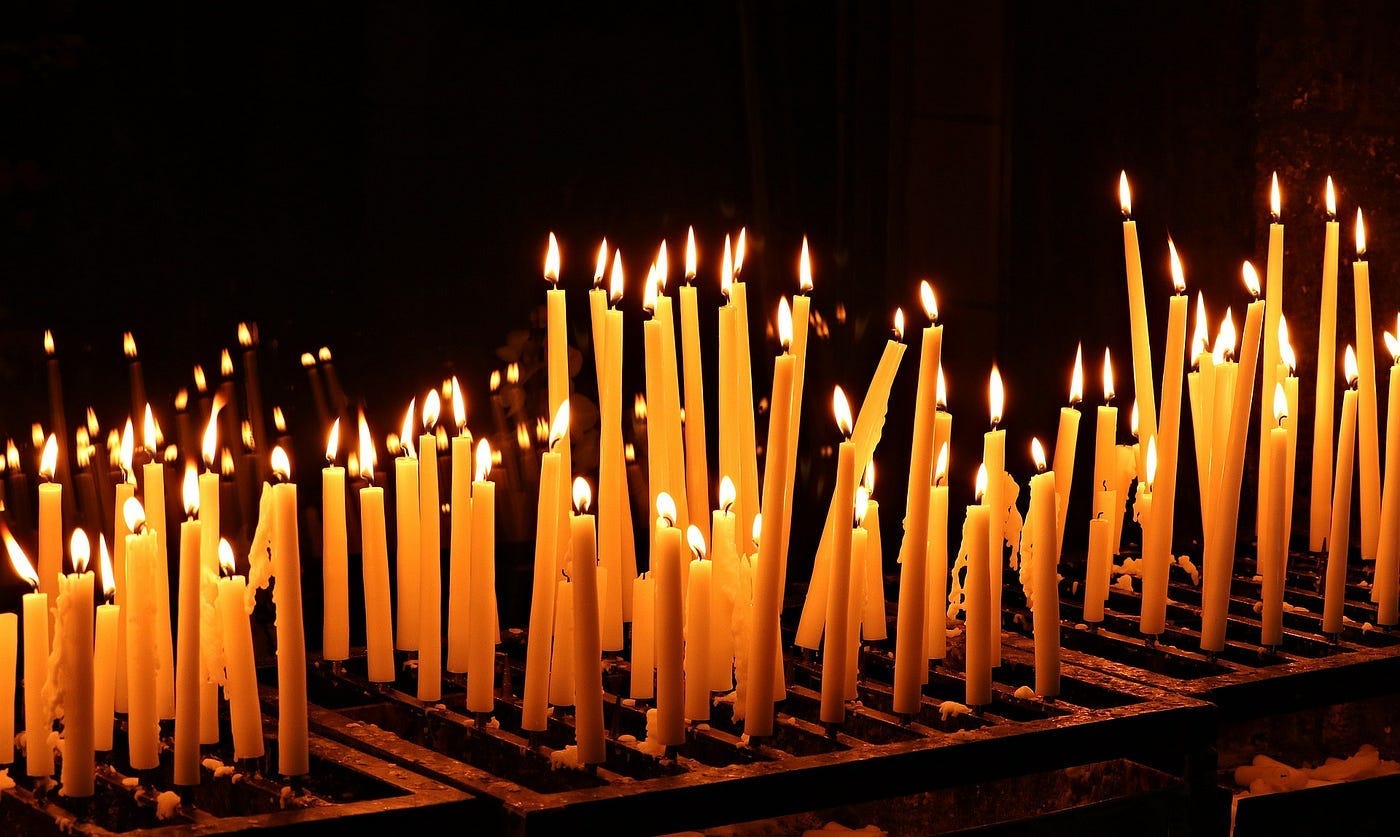
I have to confess I ate some procrastination cookies the other day. When I mindlessly click around YouTube to distract myself from doing chronic chores (is cleaning ever really done) I occasionally stumble upon what I call procrastination cookies. (When you eat cookies, can you eat just ONE cookie? Really? Wow. I’m impressed.) When one video catches my attention — you guessed it! I search for similar videos to dally away the day.
One day I just happened to stumble upon Dr. Heather Hinam, Ph.D. (a Canadian naturalist, artist, photographer, and educator). She posted her video capturing the effects of a cold Canadian day on a freshly blown soap bubble. To savor the beauty of her handiwork, I replayed Dr. Hinam’s video multiple times. The final replay ignited thoughts of the similarities between a bubble freezing and how we form beliefs.
[Huh? What? Come on Soul! How esoteric can you get? Yes, we know you’re a monk and all — but really?]
Fine! Fine! Bear with me. Journey with me to break two unique events into some insightful observations concerning beliefs.

Event 1: Bubbles
As we watch the birth of Dr. Hinam’s soap bubble (click here to watch her video) we witness the results of carefully dipping the end of a clear tube into a soapy solution to then gently blow air through the tube — forming a translucent soap bubble cuddling up with a pinch of snow. As we watch the effects of cold air jostling the bubble about, we witness frozen specks form about the soap bubble’s surface.
Within seconds a once fluid translucent sphere transforms into an opaque crystal cavity of air. Based on a Nature Communications post titled How soap bubbles freeze we learn why we see dozens of frozen specks form on soap bubbles (versus one frozen speck growing in size). As I learned how soap bubbles freeze I chuckled when the thought bubbled up — the title of this post — bubbles and beliefs share much in common!
How so?

Event 2: Beliefs
How beliefs form and grow starts in infancy. Growing up, we’re taught ways of doing and being. While growing up we form fragile sets of beliefs based on feelings.
Do I feel loved? Liked?
Do I feel seen? Heard?
Do I feel good? Bad
As months melt into years then decades, beliefs thicken as well as shatter. Often unconsciously, beliefs create bubbles for what we sense is right or wrong, good or bad, etc. As beliefs thicken — they freeze our ability to learn from the gift of perspective. How so?
When thoughts conflict with feelings — what happens to your thoughts?
When feelings conflict with thoughts — how do feelings change (if at all)?
Have you noticed how the more your belief aligns with both thoughts and feelings the thicker your belief grows? Thick beliefs form hard bubbles through which we navigate and comprehend life. Conflicts may challenge my original beliefs. Do I double down on my original beliefs (form a thicker bubble)? Or, do I pop outdated (unhealthy, stressful) beliefs?
When something (or someone) cracks or shatters a strongly held belief — what happens next? Do you use the crack or crumble to learn and grow by engaging the gift of exploring new perspectives? Or do you dive deep into denial to repair or fortify your belief bubbles?

Wrapping up . . .
As we age, based on our abilities (capacity to see, hear, taste, touch, smell, walk, talk, etc.), gender, sexual orientation, social, cultural, professional, political, religious, and spiritual beliefs (aka our belief sets) we form and pop belief bubbles.
As time weathers our belief sets we experience conflicting environments based on a plurality of different beliefs. When we factor in the complexity of our belief sets we quickly see just how complex, beautiful, and challenging life is.
How we navigate life with our unique belief sets freezes — or frees — our ability to learn and grow more aware of whatever bubbles we’ve created.


